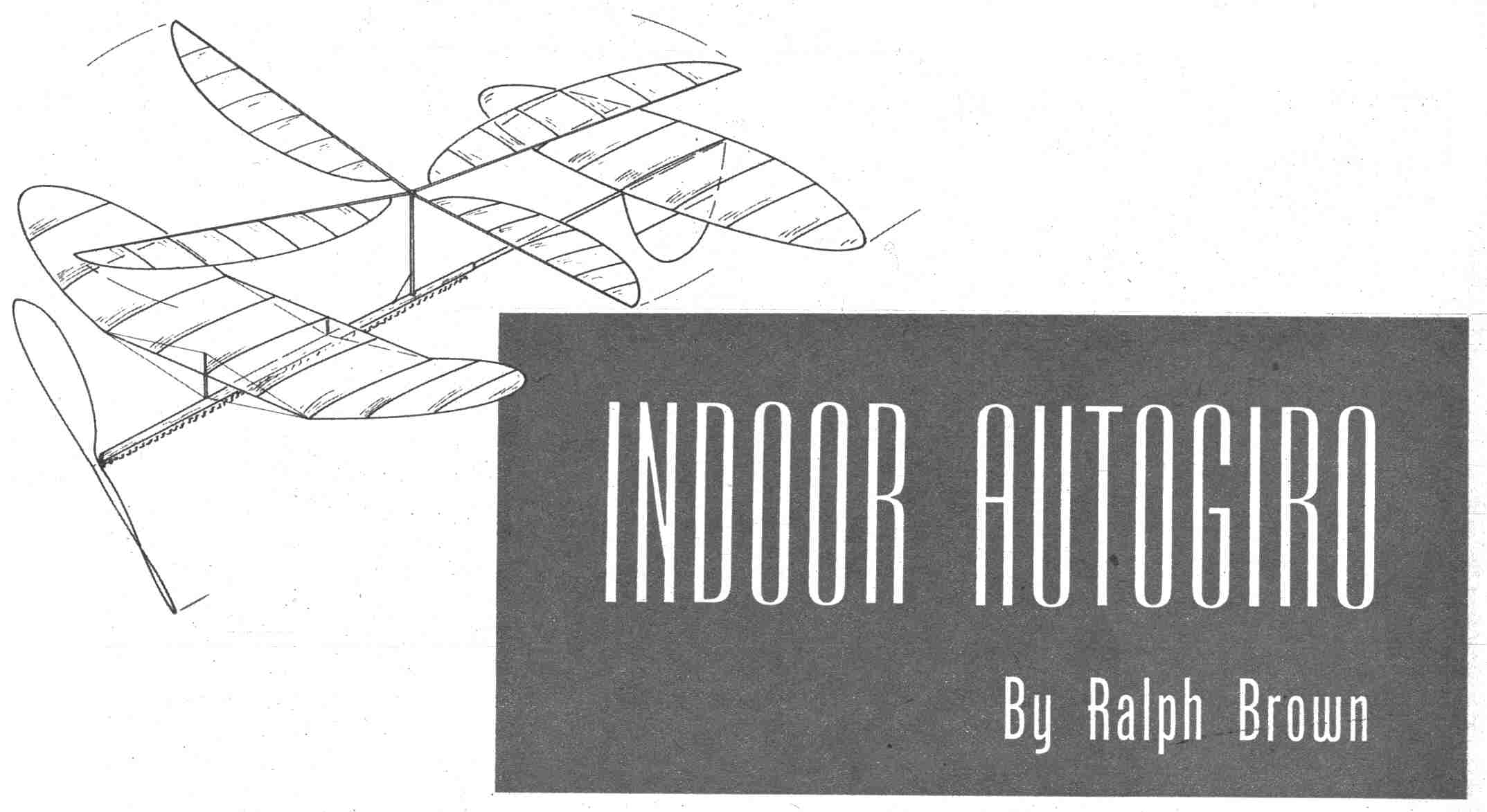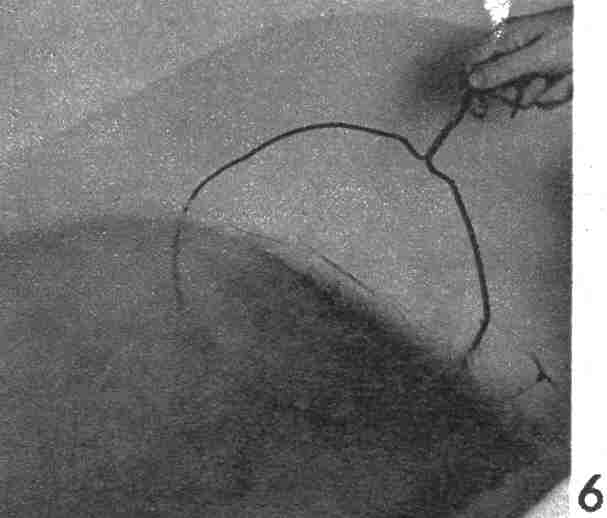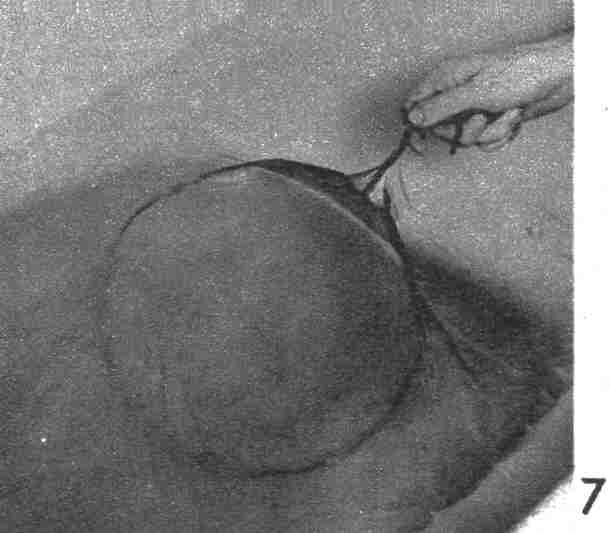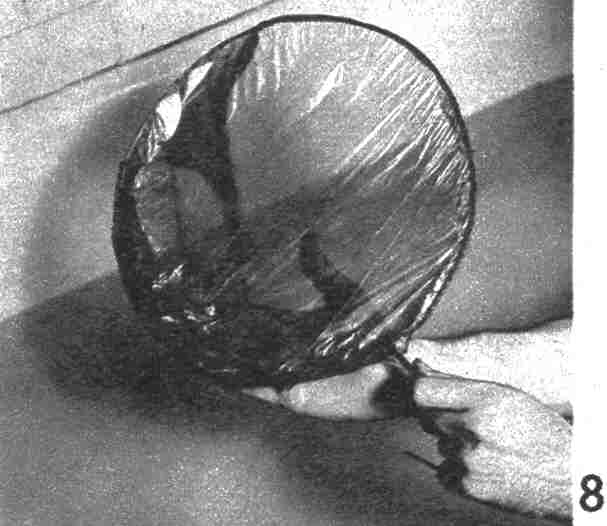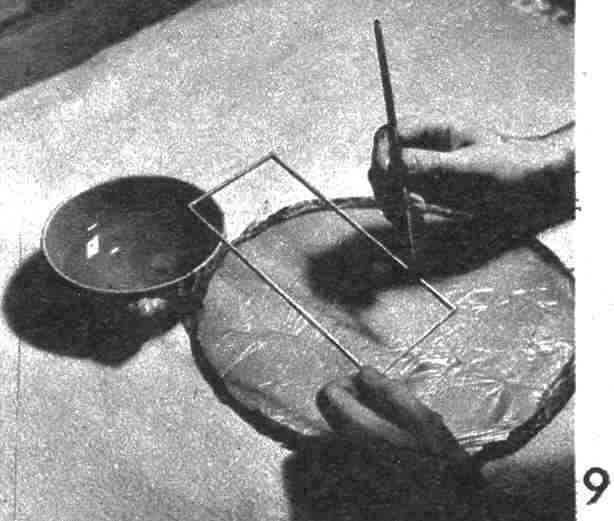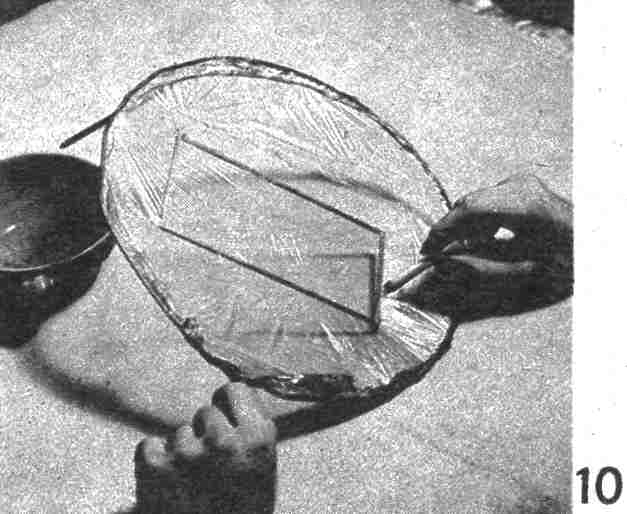|
THIS unusual indoor model holds the
national autogiro record of 2:51.
CONSTRUCTION: For maximum lightness, the lightest balsa is employed (three to five pounds per cubic foot). Fig. 1 shows the easiest method of forming a motorstick. Use quarter-grained balsa (distinguished by its speckled appearance), 9-1/2" x 7/8" x 1/64". The motorstick tapers to 3/4" width at each end. The boom is a solid piece of balsa 3/32" x 1/16" x 6-1/2", tapering to 1/20" at the back end. Plug both ends of the motorstick with soft balsa to a depth of approximately 3/8". Pierce the plug in the back of the motorstick, press and glue boom into this hole. Fig. 2 shows the best method of making and mounting the thrust bearings. Use #14 gage or 1/32" dural for bearings and .016 wire for the prop support and rear motor-hook. The prop support may be bent to alter the thrust angle. Fig. 3 illustrates the best method for forming the wing, stabilizer, and rudder tips. After forming the tips, the method used in Fig. 4 is the best for laying out your wing, stabilizer, and rudder outlines. When this has been completed, prepare a rib template as suggested in figure 5 (use rib section on plan to form your template). Be sure to follow procedure in Fig. 4 to fit each rib in place. The front wing mount is 1/2" high; the rear, 3/8". Both are 1/16" diameter round balsa. (After wings is mounted, glue in a half-inch brace post of 1/32" diameter round balsa - this brace to support the tungsten-wire bracing. Brace top of the leading edge of the, wing to the brace post; the bottom of the leading and trailing edges are braced to base of the wing mounts. Use #3 tungsten wire for the bracing.) The vane mount is made of 1/16" round balsa tapering to 1/32" at the top. Brace vane mount to motorstick, as shown in sketch. Vane revolves on a short wire cemented to the top of vane mount. Use small cup washers above and below the vanes for bearings. Required vane dihedral is 5/8" under each tip. Carve prop from a 1-1/16" x 1" x 8" balsa blank. The propellers on these featherweight floaters are carved from light balsa to a paper thinness, and weigh as little as 15/1000 of an ounce. Power is supplied by a 14" loop of 5/64" rubber; 900 maximum turns. Now that the basic construction has been completed, we come to the most fascinating phase of the building : the preparation of and the covering with microfilm. Figures 6 to 10, inclusive, cover the entire procedure pictorially, but here is the word-by-word description. Fill the cap (from the bottle of prepared mic solution) and pour on the water. For those builders who are unable to secure prepared solution, we offer the following method of preparing the solution: 12 parts nitrate dope. 4 parts collodion, 1 part castor oil, and 2 parts amyl acetate. Use the castor oil sparingly, for too much makes the film overflexible. The correct amount of castor oil gives the film flexibility. When color appears, sheet is dry. Fig. 6 shows the method of dipping the coat hanger beneath the sheet. Be sure to start at the edge of the sheet with hoop as shown in Fig. 7, and hold the sheet in a vertical position when lifting it from water. Remove any double layers of film by gently pulling it back to the edge; see Fig. 8. Covering the framework is as easy as it is pictured in Figs. 9 and 10. Just moisten the wood with water, lay it on film, and allow, to dry. Make certain that the film completely adheres to frame, by running fingers around the framework. Trim excess sheet with a wire heated over a candle or a cigarette. FLYING: Because of the extreme lightness, the most outstanding point in launching a model is that it is never pushed but gently thrust forward at about the flying speed of the ship, which is slower than you normally walk. The adjustment and flying require individual experimentation until you arrive at the maximum efficiency of your model. It should be remembered that the vanes must be rotating prior to the launching of a power flight. Scanned from April, 1944 |
||||||
